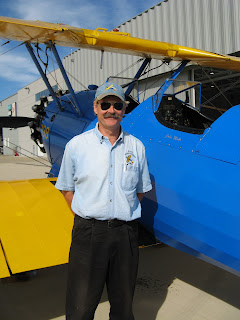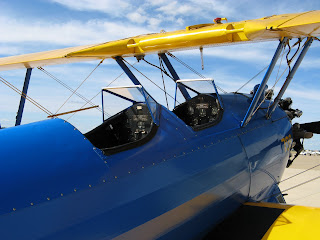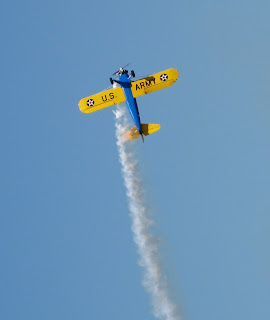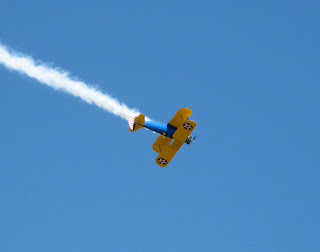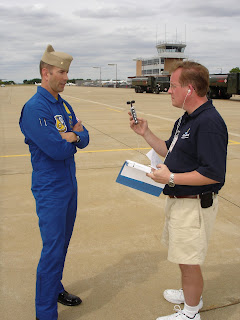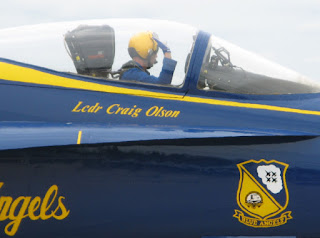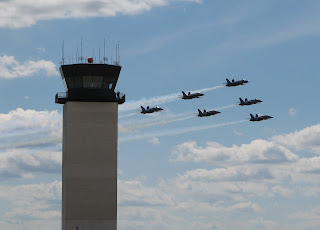Subscribe to Airspeed through iTunes or your favorite other podcatcher, listen to audio at http://airspeed.libsyn.com/, or download directly at http://media.libsyn.com/media/airspeed/MancusoRide1.mp3.
The second of my 2007 aerobatic rides!
The show starts out with an update on my instrument training, including cockpit audio. Then we get into the ride, complete with audio from the MicroTrack 96/24 plugged into the Extra’s intercom.
Michael Mancuso is in his 10th year doing shows. He has 7,000 hours total time and commercial and instructor certificates. He started flying gliders at age 11 and soloed for the first time when he was 13. He and his family own Mid Island Air Service on Long Island in New York and Michael started Gyroscopic Obsessions in 1995 to teach aerobatics. He competed in IAC aerobatics from 1992 to 1997 and then spent from 1998 to 2000 with the Northern Lights.
Michael flies the Extra 300L. The 300L is about 23 feet long and nine feet tall at the tail, and has a wingspan of about 25 feet. It’s powered by a Textron Lycoming AEIO 540-L1B5 300 horsepower engine connected to an MT three-blade prop that pulls the aircraft through the air at 170 knots when cruising at 75% power. It’ll get off the pavement in 315 feet, climb at more than 3,000 feet per minute, pull plus and minus 10 g’s, and do all kinds of crowd-pleasing gyrations between its 55-knot stall speed and Vne of 220 knots. The aircraft is built in Germany and certified in the United States.
 The Extra on the ramp when I arrived. Taking on fuel and getting ready for a morning of flying media riders. How nice is Mike? And I’ll bet you that going that Extra mile (pun intended) gets really valuable exposure for his sponsors that they wouldn’t otherwise receive. All this and flying two demos a day at the actual show? That’s hard work.
The Extra on the ramp when I arrived. Taking on fuel and getting ready for a morning of flying media riders. How nice is Mike? And I’ll bet you that going that Extra mile (pun intended) gets really valuable exposure for his sponsors that they wouldn’t otherwise receive. All this and flying two demos a day at the actual show? That’s hard work.
The guy scheduled to go after me cancelled when he got his signals uncrossed and figured out that this was an aerobatic flight and not a balloon ride. Gotta pay attention to who’s in town, my friend! This is Michael Mancuso we’re talking about! Anyway, since when does a balloon ride start at 9:00 a.m.? Not with any balloon pilot with whom I’d ride.
This is throw-the-airplane-ass-over-tea-kettle-high-over-Gull-Lake time!
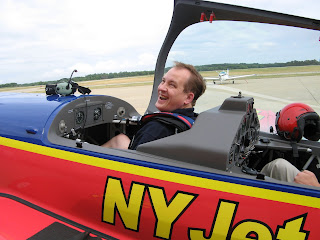 Arriving back after the ride. My glasses came off as I took off the headset and – “sproing!” went flying into Michael’s lap. That’s alright. A ride like that and I’m set for the week.
Arriving back after the ride. My glasses came off as I took off the headset and – “sproing!” went flying into Michael’s lap. That’s alright. A ride like that and I’m set for the week.
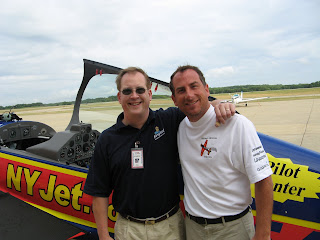 Last shot on the ramp for the day. Then it’s time to go sit in the Meijer parking lot and let my vestibular system reset while awaiting the Blue Angels’ arrival a few hours later and the rendezvous with photographer par excellence Dan McNew for the interview with Craig Olson.
Last shot on the ramp for the day. Then it’s time to go sit in the Meijer parking lot and let my vestibular system reset while awaiting the Blue Angels’ arrival a few hours later and the rendezvous with photographer par excellence Dan McNew for the interview with Craig Olson.
Great interview with a great naval aviator, but the ride makes Michael the Airspeed MVP for this trip to BTL!
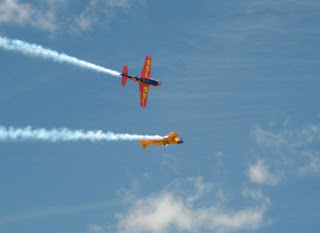 Here’s the maneuver I discuss in the audio. Michael performs barrel rolls around an inverted Matt Chapman’s track on Sunday. You need to be on the ground and at the fence to really appreciate this. Precision in all three axes and power management to boot. Unreal. I hope the non-pilots in the audience recognize the difficulty of this thing that Michael makes look so easy.
Here’s the maneuver I discuss in the audio. Michael performs barrel rolls around an inverted Matt Chapman’s track on Sunday. You need to be on the ground and at the fence to really appreciate this. Precision in all three axes and power management to boot. Unreal. I hope the non-pilots in the audience recognize the difficulty of this thing that Michael makes look so easy.
Contact Information for Michael:
Michael Mancuso Airshows
Brookhaven Airport
139 Dawn Drive
Shirley, New York 11967
Phone: 516-359-9948
e-mail: michael_mancuso@mmairshows.com or nlight4@aol.com.

